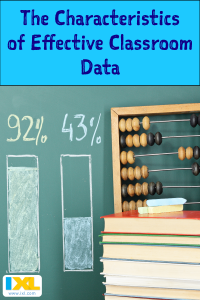It seems the age of big data is finally here, both in our daily lives and in the classroom. The volume of data has exploded in recent years, but more data doesn’t always mean more useful data. In order for classroom data to be effective, it needs to meet certain criteria. In the following post, we’ve highlighted 7 characteristics that make classroom data meaningful for teachers and administrators alike.
Despite the constant presence of data, more than half of U.S. teachers say that “data-driven instruction” is more aspirational than actual in their classrooms. While 8 in 10 teachers say they would like to use data to make instructional decisions, 70% believe that the tools they have today are inadequate. In short, teachers are overwhelmed with data that doesn’t have an obvious application.
So, what qualities actually make data effective and useful? Research has shown that data for instructional decision-making should be:
- Timely: Real-time analysis allows teachers to reach students at critical moments in the learning cycle.
- Comparable: Data tied to standards enables easy comparisons across grades, classrooms, and programs.
- Predictive: Data should make it easy to compare progress over time and to see trends for both individuals and classes.
- Granular: There needs to be adequate detail so that teachers can see where breakdowns in learning occur and where to focus their instruction.
- Simple: Data needs to be easy to find and understand, without extraneous detail.
- Automated: Data collection should be automated, not manual, so teachers aren’t wasting valuable time inputting scores.
- Accessible: It should be easy for all stakeholders—teachers, students, parents, and administrators—to access the data.
Are the analytics tools your teachers use meeting these requirements? For more about what it takes for data to transform teaching and learning, read our issue brief, “The Data Dilemma,” here.
To learn more about IXL’s approach to data-driven instruction, visit www.ixl.com/analytics or join us for a free webinar to see IXL Analytics in action!
